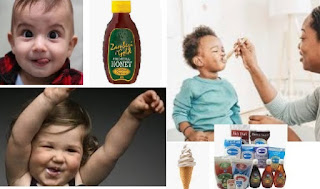One of the most exciting of these layers is taste. The 10 fundamental infographs in IGL have a sensory layer linked to taste. This means that each infograph from 0 to 9, is linked to a specific taste. This layer works fairly much the same way emotion, music and color are layered.
Learning through taste offers educators teaching children a plethora of new material to introduce into the classroom. When educators teach students to use taste as a layer for reinforcing learned content, though it may seem very basic, the 10 fundamental tastes can represent any idea in kindergarten, reception, primary, secondary and tertiary education. Therefore, when a kindergarten educator teaches a child to recognize flavours and associate them with a specific infograph, though what is being taught may seem arbitrary and fun, it is in fact an important educational building block that will later form part of Culinary Arts in the same way that sounds later become part of Music that can be further applied to any subject be it part of the humanities or sciences.
The fundamental approach to IGL is to acknowledge that human beings are born with different gifts or strengths. Some may be gifted in mathematics, while others are gifted in poetry and written language, some are gifted in dance or music whilst others are gifted in art. What IGL does is allow the integration of these approaches by linking them together in the learning processes. Bearing this in mind some students may have an acute sense of taste. Normally this gift would only become useful if they went on to join the culinary arts and become a chef. However, an acute affinity for taste integrated into infographs entails that a "thought structure" surrounding taste can be used by students to process educational information even at the highest levels of tertiary education.
Like emotion, taste is a formidable layer for building memory, especially from a young age. The ability to recall information by imagining what it "tastes like" is an important layer in IGL. It is, for the most part, ignored in current educational approaches.
For kindergarten and reception teachers whose role it is to link and reinforce different tastes to infographs this provides a sensational new method for teaching important skills related to a child's ability to learn, recollect and think creatively about the information they encounter.
The table below shows how taste is mapped into an IGL programme.
Bringing taste to the classroom as a teaching aid....
It is not difficult to imagine educators in reception teaching children the number 0 which is neutral and tastes like water, number 1, which is sweet or the number 2 which is sour and the number 3 which is bitter, number four which is salty and five which tastes like a vegetable, six which tastes like spice and so on. Each fundamental taste has a numeric value and related infograph. This entails bringing various new teaching aids into the classroom for these tastes such as candy floss and lemons. These are perfect for getting young children involved and excited about going to school and enjoying the learning process.
Children will notice that the number 12 which consists of putting 1 and 2 together or two different tastes together, namely, sugar and lemons creates an enjoyable drink - lemonade. They would even make lemonade in class with their teacher as part of class activity and because taste is integrated by IGL this would be part of the core education process, as important as learning subjects like maths, but using an approach that is far more engaging for young minds. Eventually students having learned these layers would effortlessly be able to use taste to form complex ideas, use these to think creatively, apply them to solving complex equations and as a powerful reference for recalling ideas and numeric values that can be applied in any subject from poetry to physics. This powerful information system would initially be viewed as a game or fun interaction between educators and children. Being able to use aids that where once arbitrary or merely or simply a fun activity such as baking cakes, making a hot dog, or making lemonade to instill and teach learning skills fundamental to a child's ability in education also makes education in the early pre-school years just important as higher education.
Using Integrated Linguistics students can develop academic skills more quickly that allow them to learn content with increased memory, cognitive ability and eventually much faster reading speeds that outclass rates of assimilation in any educational system found anywhere in the world.
Advanced learning ability gained through the layering process in IGL will not only enable students to learn more content, but do so at a younger age and far more effectively than is the practice in education today. What it takes a person 25 years of education to achieve from pre-school to tertiary education could take an IGL student less than half the time. Solving difficult problems and finding solutions to baffling conundrums that need resolving, even in the sciences, would be like child'splay to them.
 |
The joy of sugar. Taste is a powerful layer for learning
mapped into IGL
|


No comments:
Post a Comment